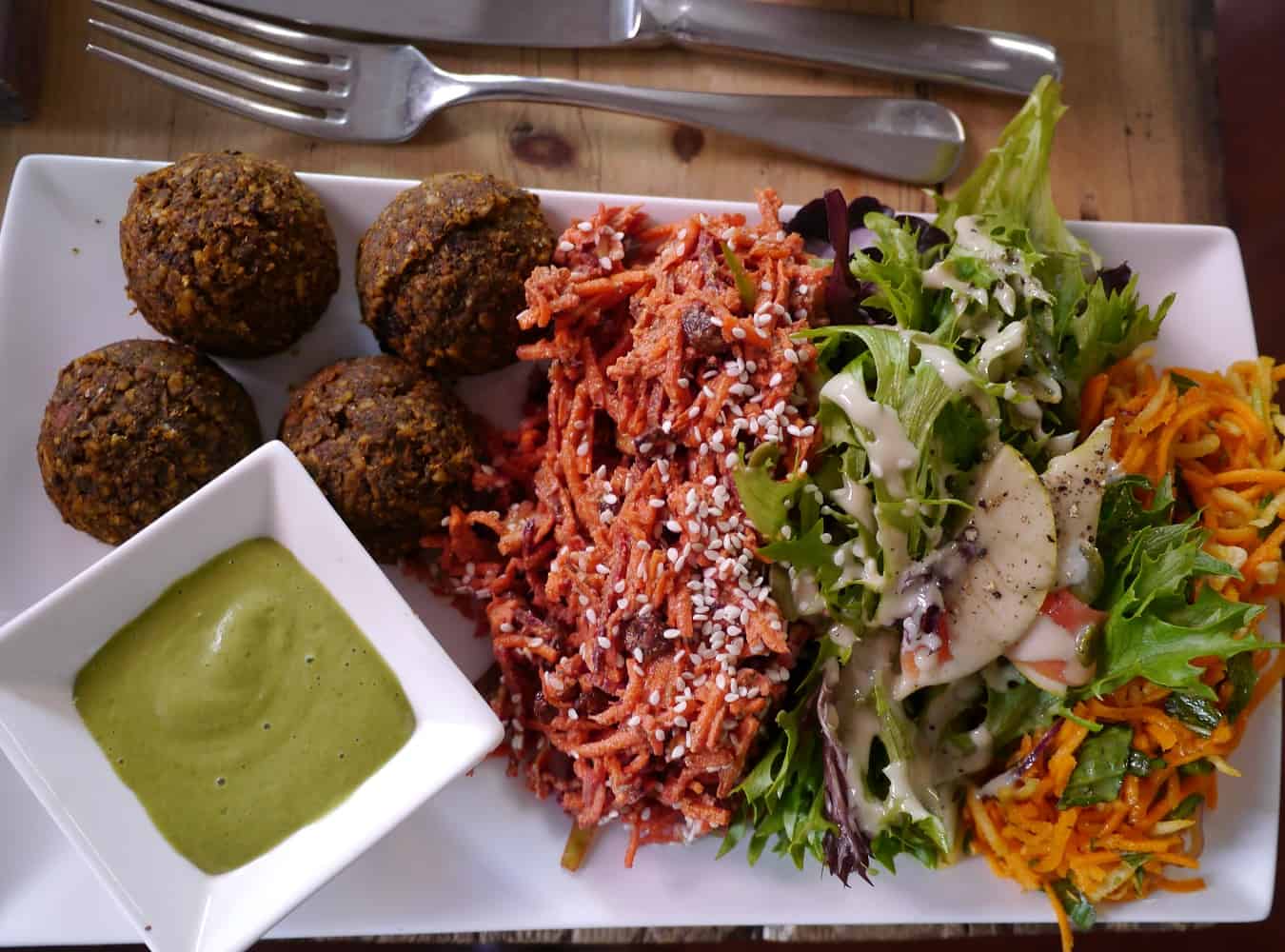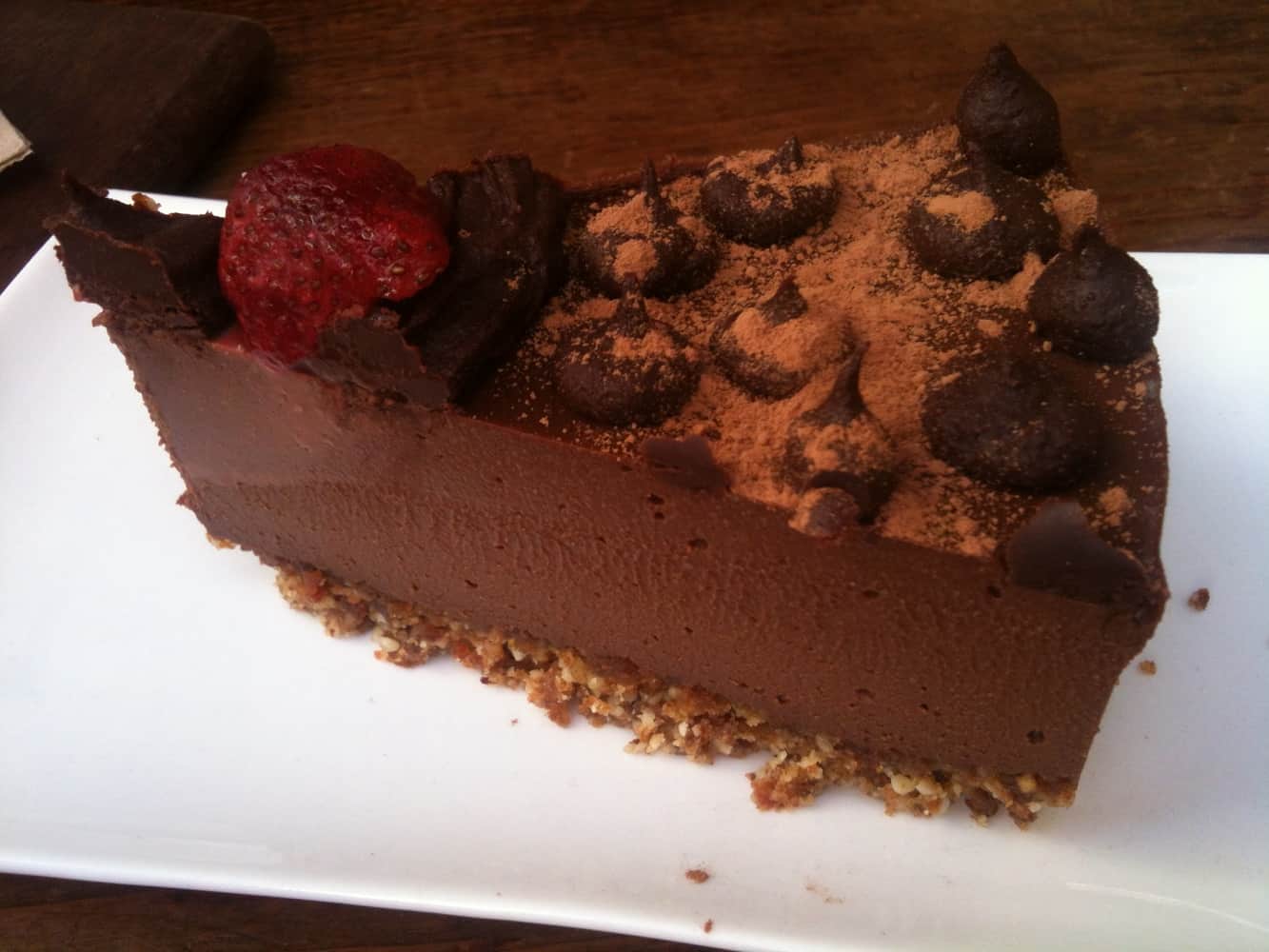What ‘raw food’ actually is (it’s not just about salad!)
Yesterday was July 11th, and also (you probably didn’t know) International Raw Food Day (I didn’t know either, until Google told me). When I first heard about raw food I have to admit I was seriously uninspired. I imagined cold unappetising plates of salad for meal after meal, and never bothered to look any further into it.
I’d probably never have changed my mind if I hadn’t stumbled across a cafe in Fremantle called the Raw Kitchen about 9 months ago. The food at this cafe is truly delicious, and the continuous queues outside and the difficulty in finding a table at the weekends is testament to how good everyone else thinks it is too. As soon as I ate there, I was hooked. It really opened my eyes to just how tasty raw food can be.
What does ‘Raw Food’ mean?
Put simply, raw food is food that has not been heated above 46°C (115°F). As heat destroys nutrients and enzymes, keeping food below this temperature is thought to keep the food at its optimal nutritional levels, and preserve its life-force. Raw food is sometimes referred to as living food. If you’ve ever seen a plate of over-boiled, grey, lifeless and limp vegetables, you should be able to understand this premise.
Often raw food is also free from dairy, eggs, wheat and gluten. Ingredients used are unrefined and as close to their natural state as possible. To get a variety of textures, forms and flavours, techniques such as dehydrating, blending, soaking and freezing are used.
There can be lot of effort required in preparing raw food. Cooking often makes food easier to digest, so if it’s going to be eaten raw then often it needs to be prepared in some other way to make it more digestible. Raw nuts, legumes and wholegrains contain high levels of phytic acid (phytate), which is the molecule plants use to store phosphorus. Humans cannot digest phytic acid, and it binds to minerals such as calcium, iron, zinc and magnesium, preventing us from absorbing them. To make them easier to digest, there’s a lot of soaking involved (sprouting reduces phytic acid without reducing the nutritional content), and this takes time (often upwards of a few hours). Then, to dry the food again, it needs to be dehydrated, which means using a dehydrator, which run at 46°C and have a fan for air movement, for 8 hours or longer in order to remove moisture. Dehydrators are also used to create the texture of oven-baked food.
My take on Raw Food
I would never eat an entirely raw diet because I love cooked food: I love the comfort of a bowl of piping hot soup on a chilly day, there is a huge space in my life for oven-roasted vegetables and eggs for breakfast on Sunday mornings has to be one of my all-time favourites. Plus, from a sustainability point-of-view, I believe we need to eat according to the seasons, and that means we need to freeze, pickle and preserve. I don’t think it’s possible to eat fresh food every day of the year without importing some of it, and it’s not sustainable to fly fresh produce around the globe.
An entirely or high raw food diet would also put a bit of a strain on the financial budgets of most people, me included. When you try to buy organic, local, free-range and fairtrade it already adds a lot to your weekly shopping basket. To me these are non-negotiable, because the cost of not doing them is far worse. So being able to supplement these with grains helps keep the overall cost of my weekly shop down. Pasta, bread and rice may not have much nutritional value but they’re cheap, filling, and help offset the price of expensive vegetables and other ingredients.
Whilst I understand the principles of dehydrating food, for me, cooking something in the oven at 200ºC for 2 hours makes far more sense. We don’t have solar panels and I don’t think I could justify running a dehydrator for lengthy periods on fossil fuels.
However, there’s definitely a space in my diet for raw food. Particularly raw dessert. There’s no doubt that refined foods have little (or no) nutrition. White flour and white sugar offer nothing but empty calories. So what could be better than a dessert that removes the nutritionally devoid parts and replaces them with ingredients that are super nutritious and tasty?! Yes, raw desserts cost considerably more to make, but our bodies weren’t designed to eat sugary, fatty, carbohydrate-loaded desserts every day (or multiple times a day).
What does raw food look like?
I want to share with you some of the photos I’ve taken from my many visits to the Raw Kitchen. It inspired me to investigate raw food, so maybe it will convince some of you doubter out there that it’s not all lettuce and carrot sticks!
Even the doubters must have thought some of this looks pretty tasty!
[leadpages_leadbox leadbox_id=1429a0746639c5] [/leadpages_leadbox]













Oh Yay. Your photos make me want to take up raw food (again)!! One would have to be happy with food like that. I will have to give it another try. We did adopt green smoothies with lots of greens and it made a huge difference to both my husband and me. My husband who despises most vegetables and salads literally hangs out for his green smoothie full of the formerly despicable spinach!!
I wish more people realised green smoothies were actually delicious! After weeks (months) of turning up his nose, I finally got my boyfriend’s dad to try one, and he said if he’d known they tasted that good he’d have started drinking them ages ago!
Indeed! Love the Raw Kitchen!
I am spending the summer in Ecuador and apparently there was a volunteer here a few years ago who was a raw foodie. Aside from questioning the commitment to do that while traveling (not to mention trying to impose that on a host family) he has left an interesting legacy in my community ;) Several people have asked me about ‘these people in the US who eat food that isn’t cooked’ and apparently another volunteer was recently asked if they ‘know how to eat cooked food.’ How funny! Love the photos and the fact that you’re showing different aspects of raw food!
That’s funny! And thanks for your kind words!
Hi there this is terrific! I really commend and admire you for producing your excellent blog and everything which you put in to making it. And with an intention of awareness there is now an understanding that it is desirable to use raw garlic and onions as medicine and not food. Because of their antibiotic/antiviral nature raw onions and garlic can harm the natural good bacteria in our stomach and intestines. Beneficial bacteria do amazing things inside us from digestion to killing pathogens and producing vitamins like b12. Don’t kill off your natural biotics. Cheers Debbie